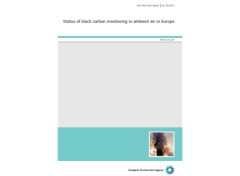I-AMICA, Black Carbon and European Environment Agency
j F Y in In Evidenza
The EEA report, ‘Status of black carbon monitoring in ambient air in Europe’, looks at the monitoring networks currently measuring black carbon, measurement methodologies and how this data is used.
As the effects of this pollutant have become better understood in recent years, it is increasingly seen as an important target of environmental control. Authors of the EEA report hope that the study will encourage more comprehensive monitoring of this pollutant, which is currently patchy.

Health and climate effects
Black carbon is the sooty part of particulate matter (PM) formed by the incomplete combustion of fossil fuels and biomass. It is mostly emitted by vehicles, non-road mobile machinery such as forestry machines, ships, coal or wood burning stoves in homes. Another important source is open biomass burning including forest fires and agricultural waste burning.
Of all air pollutants, PM is the most harmful to health in Europe. The black carbon part of PM is particularly harmful as it represents a mixture of very fine, partly carcinogenic particles, small enough to enter the bloodstream and reach other organs.
![]() There is currently a lively debate about whether reducing this pollutant could have significant gains in reducing climate change, with a recent study suggesting that black carbon’s effect on the climate is more potent than previously thought. In the atmosphere the carbon-containing pollutant effectively absorbs solar radiation leading to a warming of the atmosphere. When it settles on snow or ice, the darker colour absorbs more heat, accelerating melting.
There is currently a lively debate about whether reducing this pollutant could have significant gains in reducing climate change, with a recent study suggesting that black carbon’s effect on the climate is more potent than previously thought. In the atmosphere the carbon-containing pollutant effectively absorbs solar radiation leading to a warming of the atmosphere. When it settles on snow or ice, the darker colour absorbs more heat, accelerating melting.






